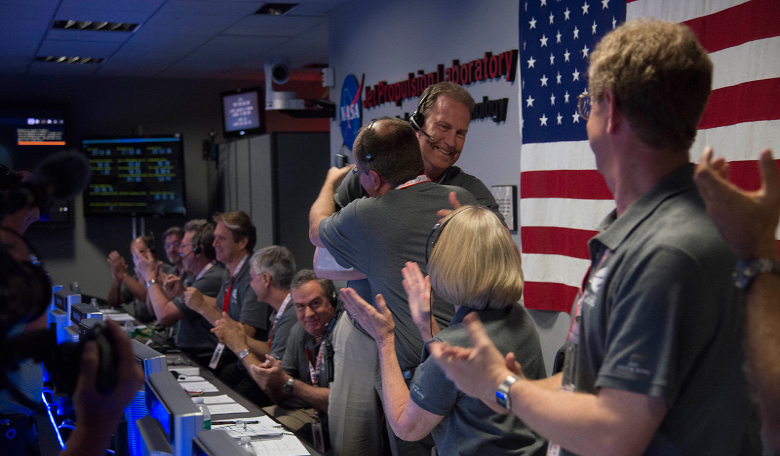It was the moment a lot of people had been waiting for and last night, aside from Independence day, many people who had been nervously awaiting the long arrival of a spacecraft that left Earth almost five years ago, had great reason to celebrate. NASA’s JUNO mission entered Jupiter’s orbit safely during a 35-minute engine burn, allowing mission scientists to finally exhale and take a much needed sigh of relief.
“This is the one time I don’t mind being stuck in a windowless room on the night of the 4th of July,” said Scott Bolton, principal investigator of Juno from Southwest Research Institute in San Antonio. “The mission team did great. The spacecraft did great. We are looking great. It’s a great day.”
Last night at 11.53 p.m. EDT, Juno tracking data alerted the navigation facility at NASA's Jet Propulsion Laboratory (JPL) in Pasadena, California of a successful orbit insertion sequence by the spacecraft, burning up 785 kilograms of fuel as it did so. Juno is the farthest solar powered spacecraft from Earth and soon after the burn was completed, Juno flexed it wings so that the sun’s rays could once again reach the 18,698 individual solar cells that give Juno its energy.
Along with being the first space mission to operate a solar-powered spacecraft at Jupiter, it promises to be a first in many other respects; the first space mission to orbit an outer-planet from pole to pole, the first mission to be designed to operate in the heart of Jupiter’s radiation belts and the first spacecraft to fly 3D-printed titanium parts (Waveguide brackets) – just a few of the notable endeavours this spacecraft has or will see in its lifetime.
“The spacecraft worked perfectly, which is always nice when you’re driving a vehicle with 1.7 billion miles on the odometer,” said Rick Nybakken, Juno project manager from JPL. “Jupiter orbit insertion was a big step and the most challenging remaining in our mission plan, but there are others that have to occur before we can give the science team the mission they are looking for.”
It was anticipated that the official science collection phase would begin in October, as Juno’s mission and science teams have a few months in which to test the spacecraft’s subsystems and to perform final calibration of science instruments. However scientists working on the mission let slip that JUNO maybe ready to collect data much sooner than that.
“We’ve figured out a way to collect data a lot earlier [than October]” said Bolton. “Which when you’re talking about the single biggest planetary body in the solar system is a really good thing. There is a lot to see and do here.”
If you were not fortunate enough to be sat at mission control when JUNO arrived at Jupiter or if you’d like an up, close and personal look at the spacecraft as it orbits the biggest planet in the solar system, then NASA has an app to help you out. Eyes On The Solar System has developed a module dedicated to the Juno mission to Jupiter. In this online, interactive visualisation, it is possible to ‘ride along’ with JUNO in real-time as it arrives at Jupiter or alternatively you can travel backward or forward in time from launch to its planned end of mission in February 2018. For more details go to: http://eyes.nasa.gov/juno











